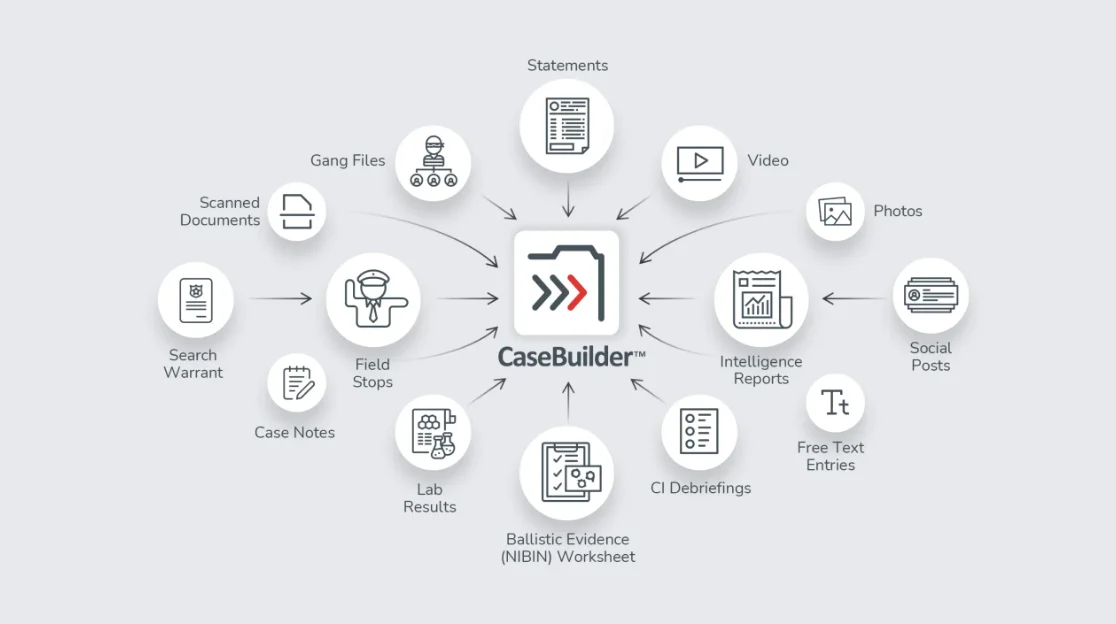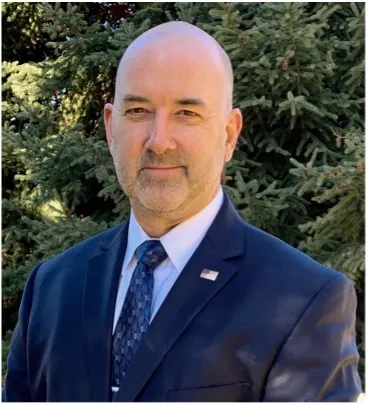It is widely known that the first 48 hours following homicide investigations involving gun crime are of critical importance as they relate to apprehension and case closure outcomes. But how can agencies set themselves up for success, both in the immediate aftermath of a gun crime and in the days, weeks, and months ahead? Leveraging force-multiplying technology, particularly systems that complement one another, can ensure that investigative progress is off to a strong start.
In this article, we will discuss some of the fundamental best practices that agencies can implement as they conduct gun crime investigations and how several of the solutions in SoundThinking’s SafetySmart Platform can be instrumental to the outcomes of gun crimes.
Best Practices for Responding Officers: The First 48 Hours
- Arrive at the scene promptly and assess ongoing incidents for suspects, leads, and victims.
- Render aid to any victims.
Best Practices for Investigating Officers: The First 48 Hours
- Collect evidence and testimony that may be available at the crime scene.
- Develop suspect leads.
- Manage the investigative process in a case management folder.
Best Practice for Responding Officers #1: Arrive at the Scene Promptly and Assess Ongoing Incident for Suspects, Leads, and Victims

An example ShotSpotter alert.
Officers responding to ShotSpotter alerts are set up with a higher degree of situational awareness than those responding solely to 9-1-1 calls. This is because as soon as trained acoustic specialists in the ShotSpotter 24X7 Incident Review Center confirm gunfire and publish an alert to law enforcement, officers receive detailed information regarding the number of rounds, number of weapons, high-capacity gunfire, fully automatic gunfire, location of shots within a 25-meter radius, the nearest street address and more. This enables officers to arrive on the scene with greater situational awareness to better focus on whether shooters or active threats may still be in the area.
Best Practice for Responding Officers # 2: Render Aid to Any Victims
When there are gunshots involved in homicide investigations, time is of the essence. Research continuously demonstrates that officers responding to ShotSpotter alerts arrive at scenes considerably faster than 9-1-1 calls, and that is assuming that a 9-1-1 call was placed at all. The faster that an officer can arrive on the scene and render medical aid to an individual or multiple individuals suffering from gunshot wounds (or any other type of wound), the greater the likelihood that lives will be saved.
Best Practice for Investigating Officers # 1: Collect Evidence and Testimony that may be available at the Crime Scene
Gun Crime Evidence
Many types of evidence are present at a crime scene, from shell casings to security camera videos to witness statements and more.
From a gun crime perspective, studies show that using gunshot detection technology (GDT) has enabled responding officers to more quickly identify a gun crime scene and collect more physical evidence. This is where NIBIN can play a vital role since using NIBIN depends on a comprehensive collection of shell casings at a gun crime scene and promptly entering them into the system. The NIBIN system stores almost 6 million pieces of ballistic evidence and has generated nearly 650,000 leads. Therefore, the more casing evidence is collected, the greater the likelihood that a NIBIN match will be uncovered, ultimately accelerating investigative progress. CaseBuilder and CrimeTracer can also correlate NIBIN details with associations to incidents across jurisdictional boundaries to more quickly identify actionable leads.
CaseBuilder and CrimeTracer integration
Vehicles of Interest
In the context of a gun crime or other types of homicide investigations, an automated license plate reader (ALPR) system like PlateRanger can provide insights into nearby vehicles, alerts on wanted or hot vehicles, and patterns of known gang-related vehicles that may have been involved and potentially be in the area. This can increase an officer’s situational awareness and the chances of apprehending a suspect quickly.
PlateRanger leverages installed cameras combined with AI to gather potentially valuable evidence regarding nearby vehicles to a shooting. That information is available to officers when they get to the scene. It includes augmented data of nearby vehicles with BOLOs, Amber and Silver alerts, NCIC hits, and historical cross-jurisdictional record involvements.

An example PlateRanger dashboard
But PlateRanger doesn’t just rely on installed cameras, which may not be everywhere. It also includes an app (iOS and Android) that allows a responding officer to use the camera on a phone to scan any plates in or near the crime scene. Their scans of plates in the area may turn up a wanted vehicle, or vehicle(s) involved in other crimes, and the shooter, or their vehicle, may still be nearby. This provides immediate actionable leads. For example, the PlateRanger ALPR system can provide immediate leads on vehicles that might be involved based on camera detection, citizen photos, or witness statements and assist in validating witness testimony. (“They drove away in a red Mustang with a plate that started 8B.”) From there, officers can use the PlateRanger advanced search function to potentially identify the vehicle. The PlateRanger data can also immediately be fed into the CrimeTracer search engine to build a more complete picture of vehicles and persons of interest, and officers can disseminate the results to other officers and agencies.
Best Practice for Investigating Officers # 2: Develop Suspect Leads
Following the evidence collection phase, officers can use a law enforcement search engine and information platform like CrimeTracer to build their homicide investigations, including persons of interest, associations, and potential criminal links, ensuring a strong criminal case for county and city prosecution convictions.
The PlateRanger data can also be immediately fed into the CrimeTracer search engine to generate vehicle leads on non-ShotSpotter-related incidents. CrimeTracer can reveal who an identified vehicle belongs to, where that person lives, any other incidents the vehicle might have been involved in, other people associated with the vehicle or the place it’s registered, and so on. It’s a valuable tool for leveraging limited information from witnesses or blurry images from the corner store’s security camera.
Drilling Down on CrimeTracer’s Refined Search Capabilities to Expedite Investigative Leads
For example, doorbell camera footage may reveal that a white man with dark hair and a calf tattoo was picked up from a crime scene by a white sedan. At this point, CrimeTracer’s Refined Search feature comes into play. In a big city, even identifying the year, make, model, and color of the vehicle could turn up thousands of hits in PlateRanger or CrimeTracer. Searching the vague details of the person would yield even more. But adding the driver description search to the context of the vehicle search, might knock that down to a few dozen or even a handful. That lets the investigating officers generate several solid leads and historical cross-jurisdictional associations in as little as a couple of minutes.
In cases where one of the leads had been arrested for a crime previously, the results might even contain mugshots. The officer can then use their phone to show the photos to witnesses and ask, “Is this the guy?” or even create a virtual lineup on the spot.
CrimeTracer Advanced Refined Search overview
Best Practice for Investigating Officers # 3: Manage the Investigative Process in a Case Management Folder
As they begin collecting evidence, officers will need a comprehensive case management system to organize and store case information in one structured, secure, and searchable digital case folder, where SoundThinking’s case management system, CaseBuilder, comes into play. With CaseBuilder, agencies can collaborate on investigations, easily document investigative updates and progress, upload security videos, add witness and victim interviews, capture tips, and more. Additionally, CaseBuilder generates a checklist of action items that agencies should take depending on case type elements of the crime and sends follow-up reminders for any tasks not yet completed. This makes it easier for departments to stay prioritized and focused as they follow up on leads, delegate tasks, allocate resources, and move from the first 48 hours of an investigation to the 49th hour and beyond.
Beyond 48 Hours: Investigating Officers Shift from a Proactive to a Reactive Approach
After the initial response, the strategy for homicide investigations changes from the early reactive approach to a proactive one, involving collaboration across specialties. Continuing to use CrimeTracer is one of the ways investigators can keep generating leads and gathering evidence. Searches can turn up further locations that the suspect has been associated with and yield surprising discoveries.
For example, in 2019, there was a homicide in Cobb County, GA with two suspects involved. Officers were able to apprehend one shortly after the homicide occurred. However, they were unable to find the driver and the associated vehicle. A year after the homicide occurred; while going through the trial, they were able to find a phone number that may have been associated with the driver. The investigator used CrimeTracer to look up the phone number and discovered a collision report from Los Angeles, CA which showed the second suspect had been contacted with that vehicle in California five days after the homicide. Thanks to CrimeTracer, they were able to apprehend the suspect and bring him back to Cobb County for trial, where both suspects were found guilty.
A Good Start Leads to Good Outcomes
Time is of the essence in homicide investigations involving gun crime, and the SafetySmart platform can help you start on track and stay on track. ShotSpotter gunshot detection gets officers on the scene quickly with situational and geospatial awareness. PlateRanger provides vehicular evidence and actionable leads. CrimeTracer adds more detail with a deeper understanding of non-obvious relationships within the data, generating still more leads. CaseBuilder keeps the evidence together and guides your actions from start to finish. The result is more cases cleared and a safer community.







